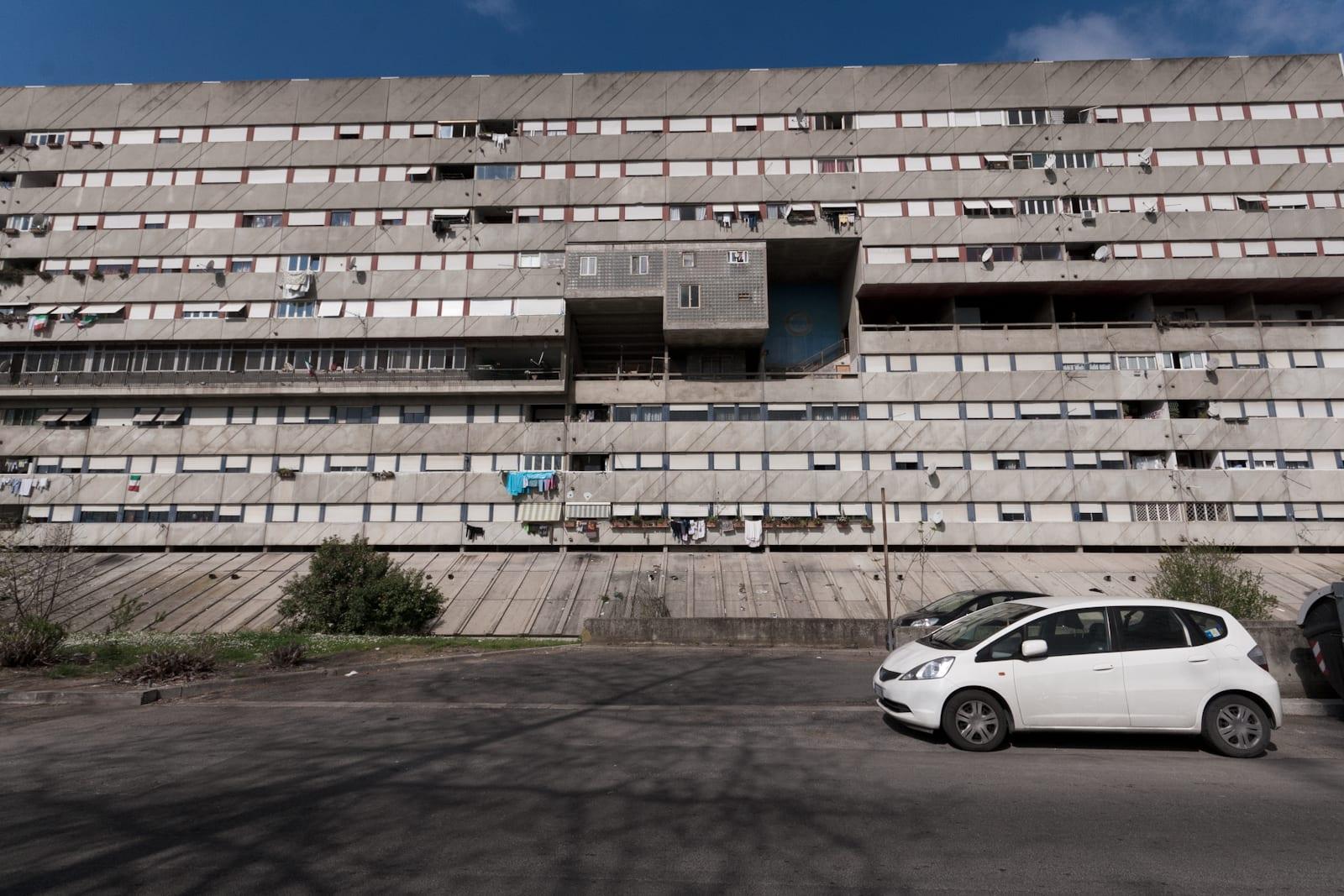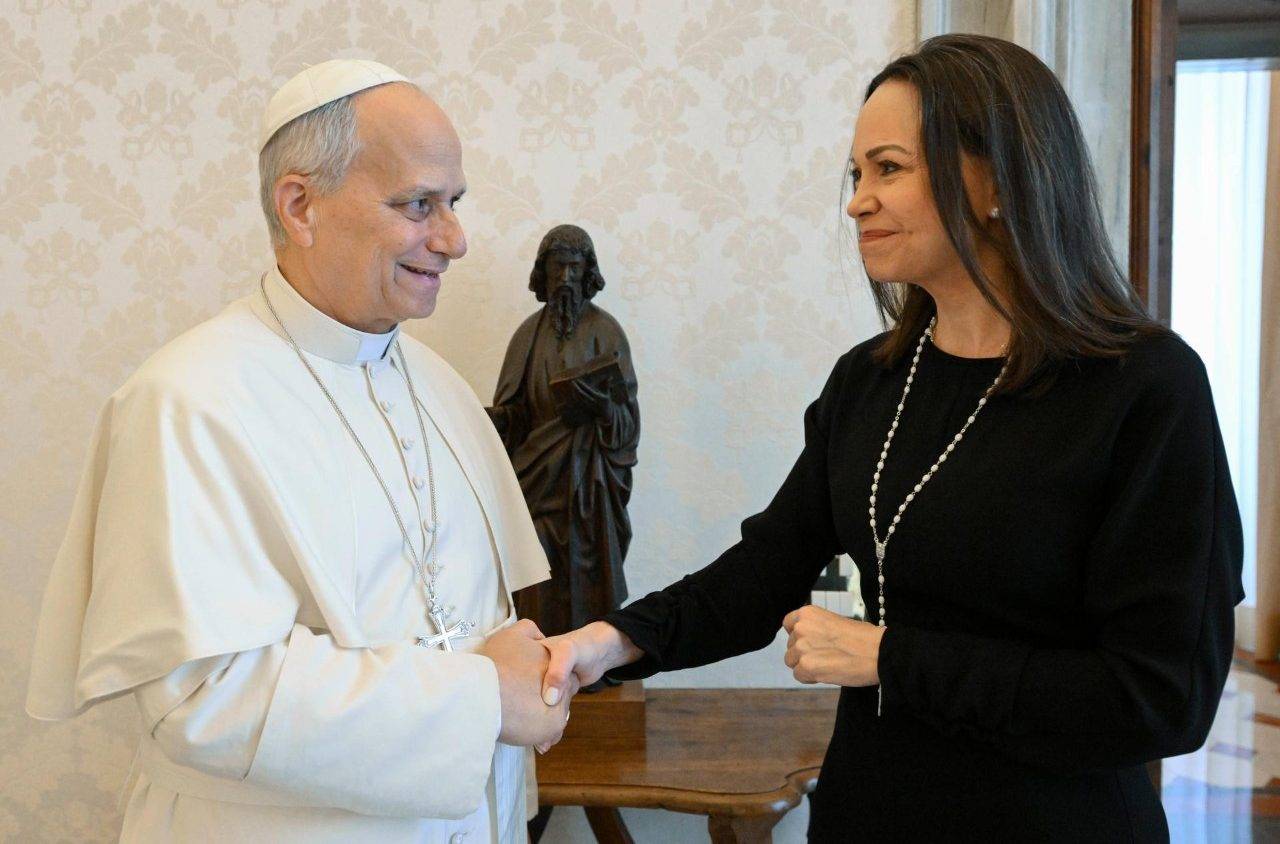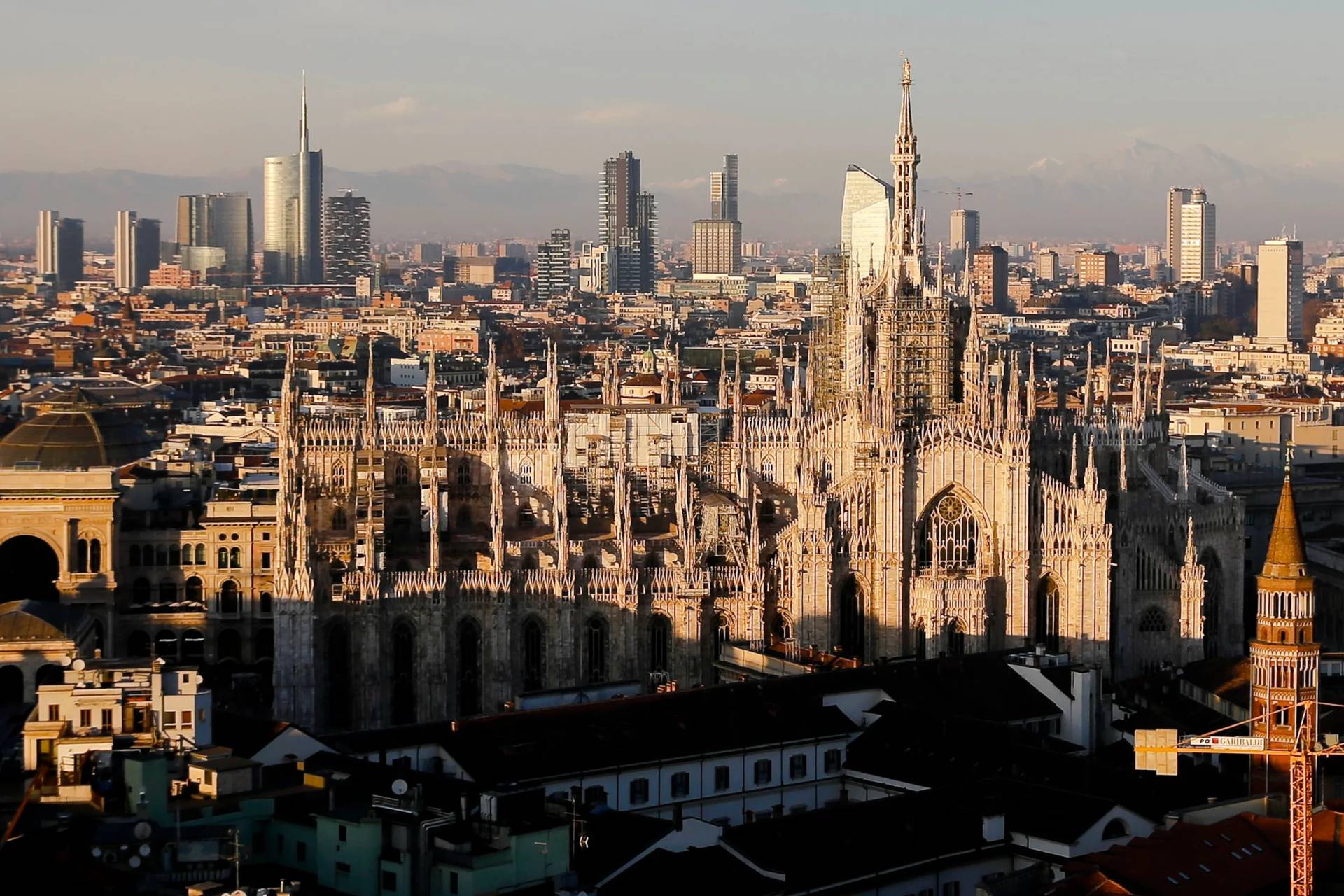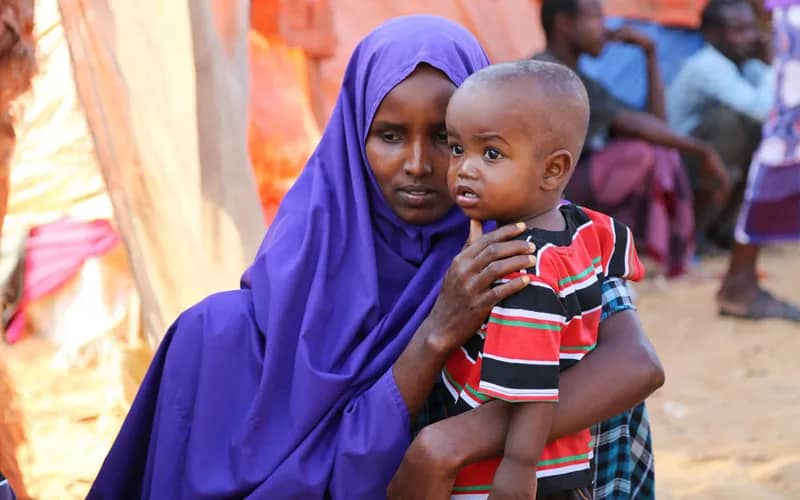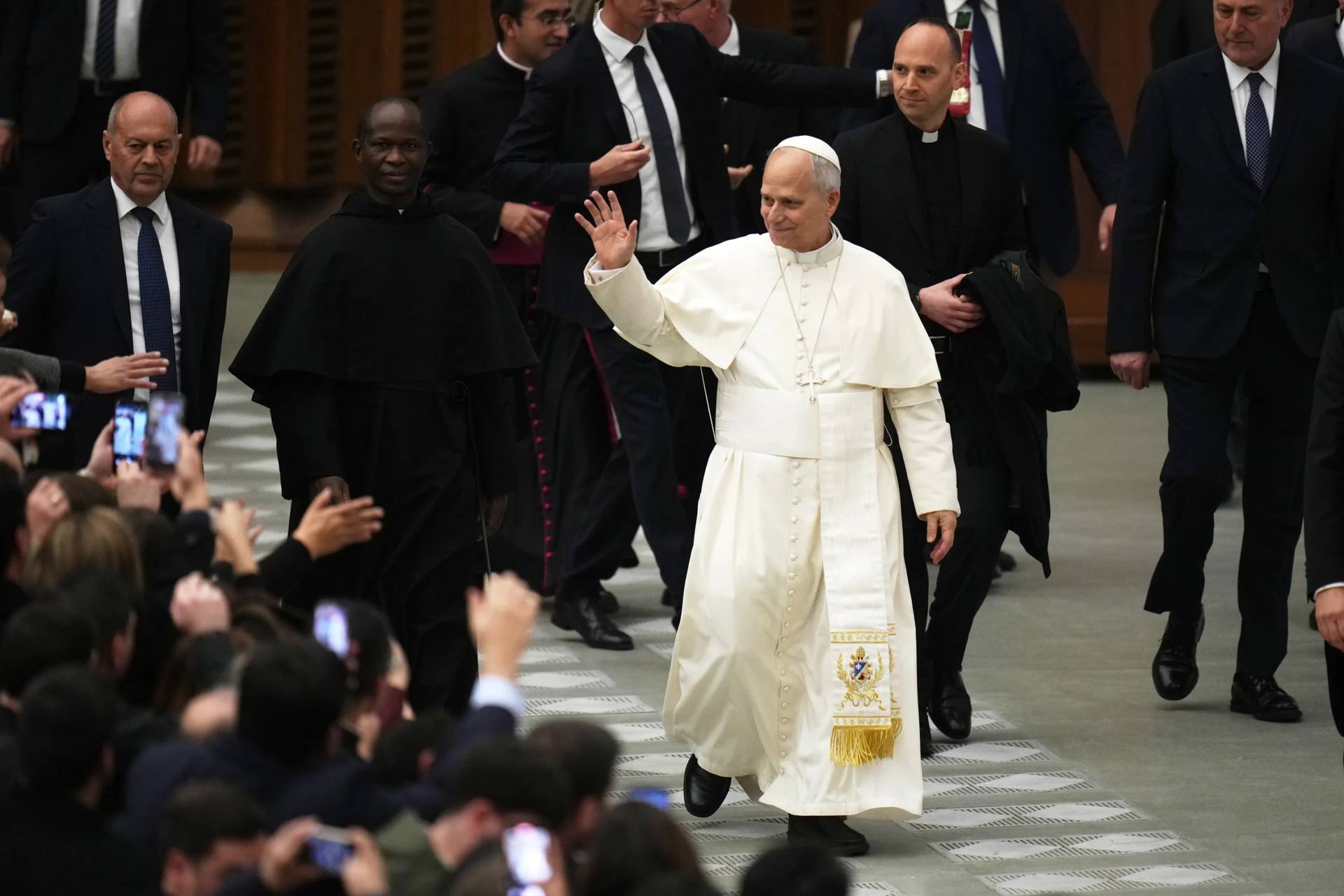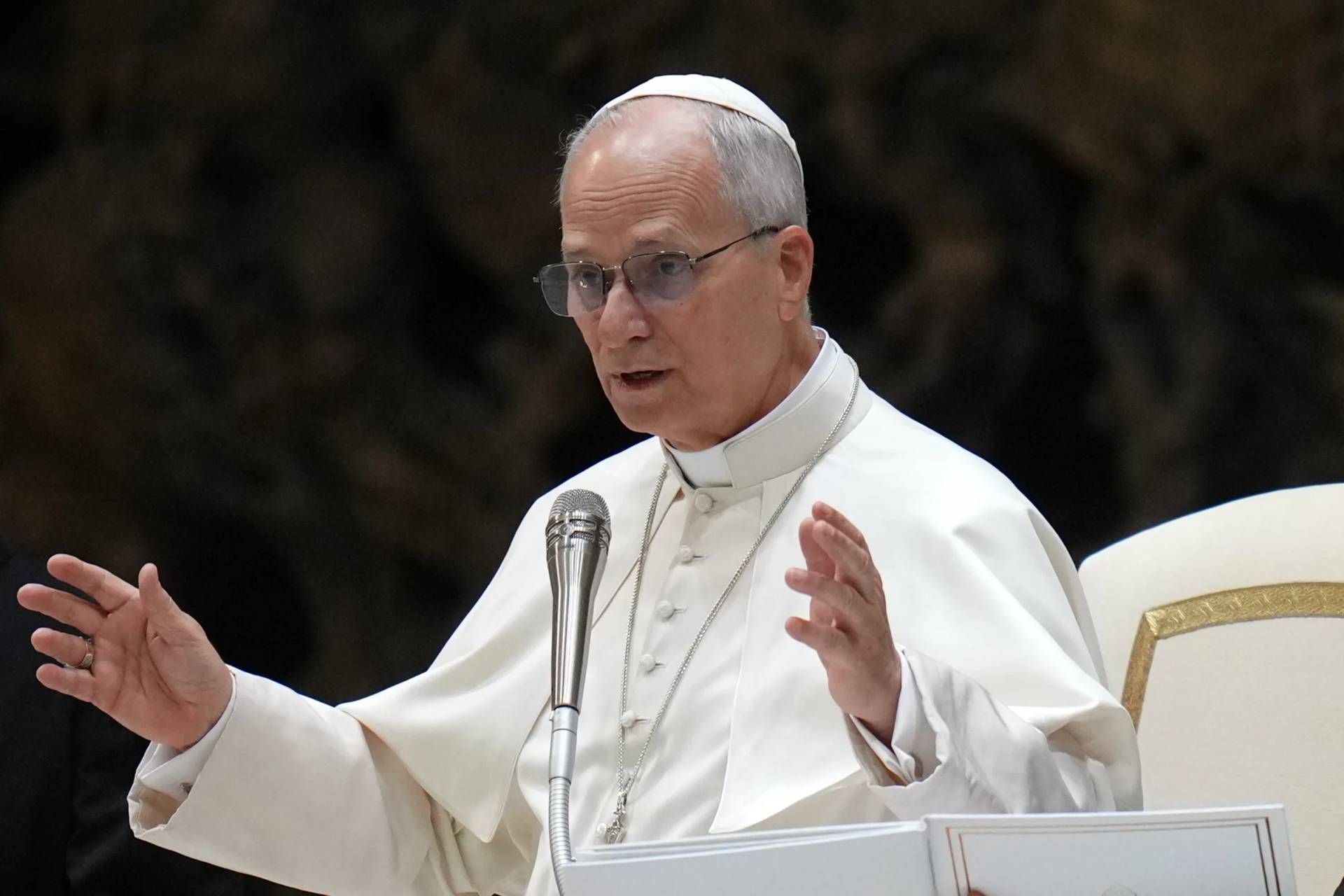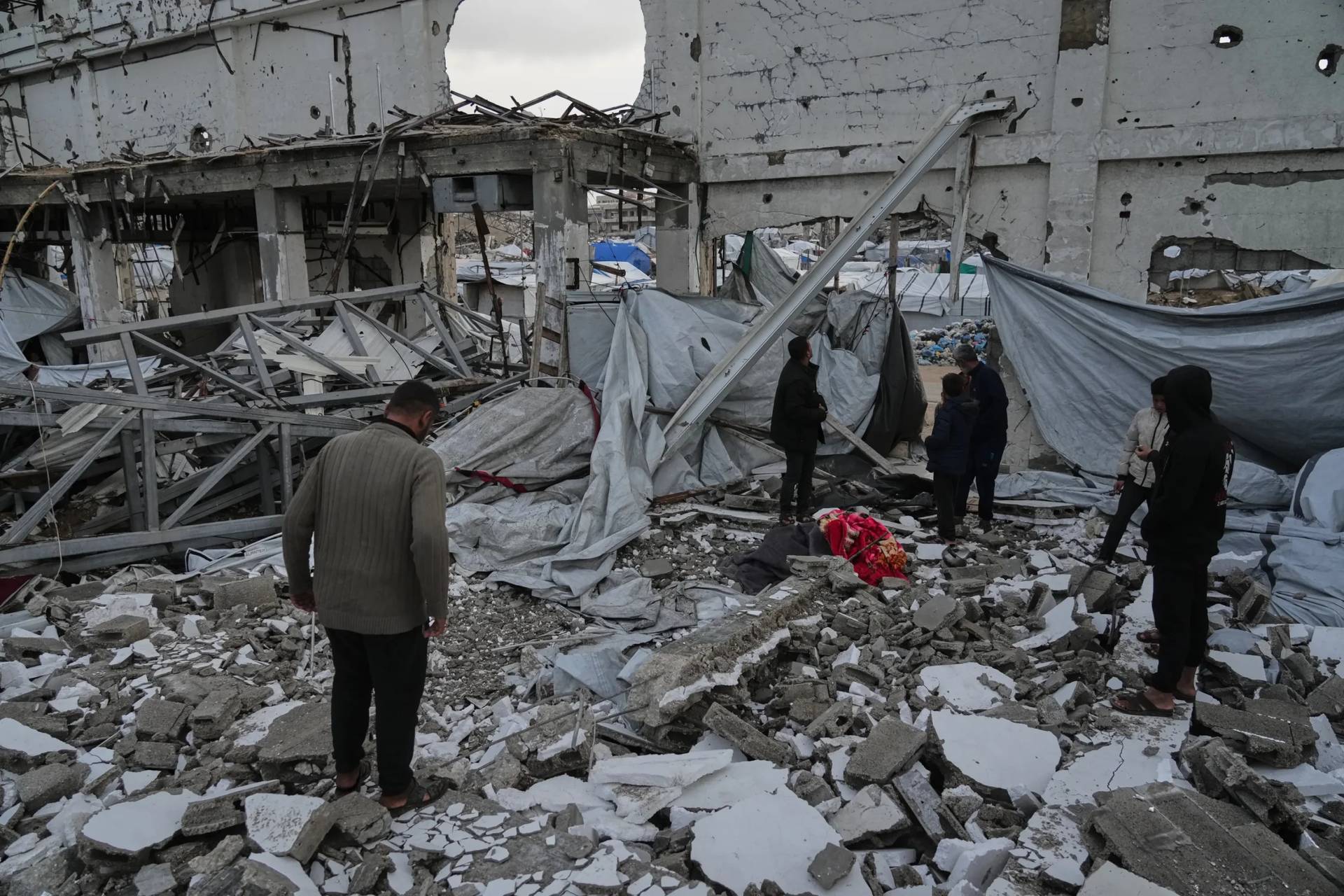ROME – Towering over the Roman peripheries, “New Corviale” is the poster child for failed low-income housing projects. Nothing ever changes here. Unrelenting, the gargantuan complex has resisted any overhaul attempt, conquered only by a sense of neglect.
Nobody wants to be here and, given the chance, everybody wants to leave. Yet someone is bucking the trend, because this Sunday, the neighborhood church, San Paolo della Croce, will welcome Pope Francis for his 18th parish visit as Bishop of Rome.
For those precious few hours, the action, energy and novelty of this pontificate will be injected into what has become an example of the city’s urban decay. On April 16, the unstoppable pope of hope will meet an immovable symbol of despair.
“I don’t know how many years people have been waiting for something to happen, and by now they just don’t believe anything ever will,” the parish priest told Crux in an interview. “That’s why the visit of the pope is important, because it offers hope.”
Stretching over 980 meters (more than half a mile), divided into six unified lots and eleven stories high, Corviale is a massive concrete altar to Italy’s failed housing projects of the early ‘70s. Running parallel to it, and connected by dark corridors, is the “small” Corviale, with five floors. On its eastern side, tilted at a 45-degree angle, is another, slightly smaller, building.
Romans call the entire complex the serpentone, meaning “big snake,” due to its shape and length. Up to 7,000 people live in its belly, enough to fill up a whole town, and initially its architects envisioned a self-sufficient neighborhood jammed into a single edifice, with its own shopping mall and other services placed on the fourth floor.
That dream was shattered in 1982, when a lack of funds resulted in an abrupt halt in construction work, and more than 400 squatters took over the fourth floor. Since then, attempts by various local administrations to clear the occupied area have failed. Criminal elements took advantage of Corviale’s abundance of dark corners and tunnels, and the place fell into disrepair.
Today, the “big snake” looks like an impenetrable fortress, clad in gray, covered with white and blue bird excrement, and surrounded by spotted mattresses and burned up scooters. Trash piles lay casually in corners and flies swarm the shaded alcoves of this labyrinth.
At noon on a Friday, the place is unusually quiet. Eerie.
Father Roberto Cassano, the parish priest at San Paolo della Croce, walks confidently through the building. His taurine neck holds a remarkably round head, with eyes hinting at both kindness and shrewdness. He’s over six feet tall, with hands the size of trash can lids.
A big man, for a big building.
“I’m a little overweight and need to lose some weight, so my doctor suggested that I try to get out and walk every day,” he says smilingly while patting his gut. “So, every day I do three swings around the whole structure, praying my rosary, and it usually takes me about an hour.”
Cassano seems convinced there’s “diabolical action” in the building, underlying the deep economic, social and psychological issues it contains. Though he can’t prove there is evil at work at Corviale, he’s sure.
“You can feel it,” he says, “you can feel it.”
The urban legend is that the architect of the edifice, Mario Fiorentino, committed suicide due to guilt in having constructed something so ugly and detrimental to the community. The real story is even less consoling. Fiorentino died of a heart attack during a meeting where fellow architects and public administration officials were criticizing the project.
“This area has huge socio-economic problems. But above all, people here feel abandoned,” Cassano says, adding that when walking around the place one sees “so much decay, so much rot.”
But the priest dismisses Corviale’s fame as a criminal hub, saying there are no rapes, violence or assassinations here, and the drug business is not unlike the one you’d find in many other parts of Rome. Of course, there’s the ongoing issue of illegal occupants, which he believes speaks more to the poverty of the place than its lawlessness.
“If these people had money for a home, not only would they pay it, but they certainly wouldn’t come here. If they occupy an apartment here, it’s because they need it,” he says.
Makeshift homes have been illegally built on the fourth floor, by erecting concrete walls in place of the original glass panels, and from the outside one can see the results jutting out bulbously.
About a week ago an Italian woman locked herself into her apartment to avoid eviction. As authorities negotiated outside, she turned the gas on in her apartment and covered the place and herself in gasoline, as well as her one-year-old and four-month-old children. The situation did not escalate, and the police convinced her to leave the apartment.
Despite the obvious tales of poverty and misery, those who have persevered in the big snake are proud of their home. A sociologist and researcher of Rome’s peripheries, Nicoletta Campanella, wrote in an essay about Corviale that its inhabitants “love the monster,” even if they don’t understand it.
“They almost have a sense of pride in living in such a well-known building, constantly discussed and at the center of media attention,” she wrote.
In a way, the complex has always stood its ground, solid and unwavering, unlike the institutions, NGOs and even the Church, all of which are perceived as having left the place to its fate.
Mass participation in St. Paul of the Cross is generally low, about 200 people total at the four Sunday services. Most of Corviale’s inhabitants are old, trapped on the high floors due to permanently broken elevators.
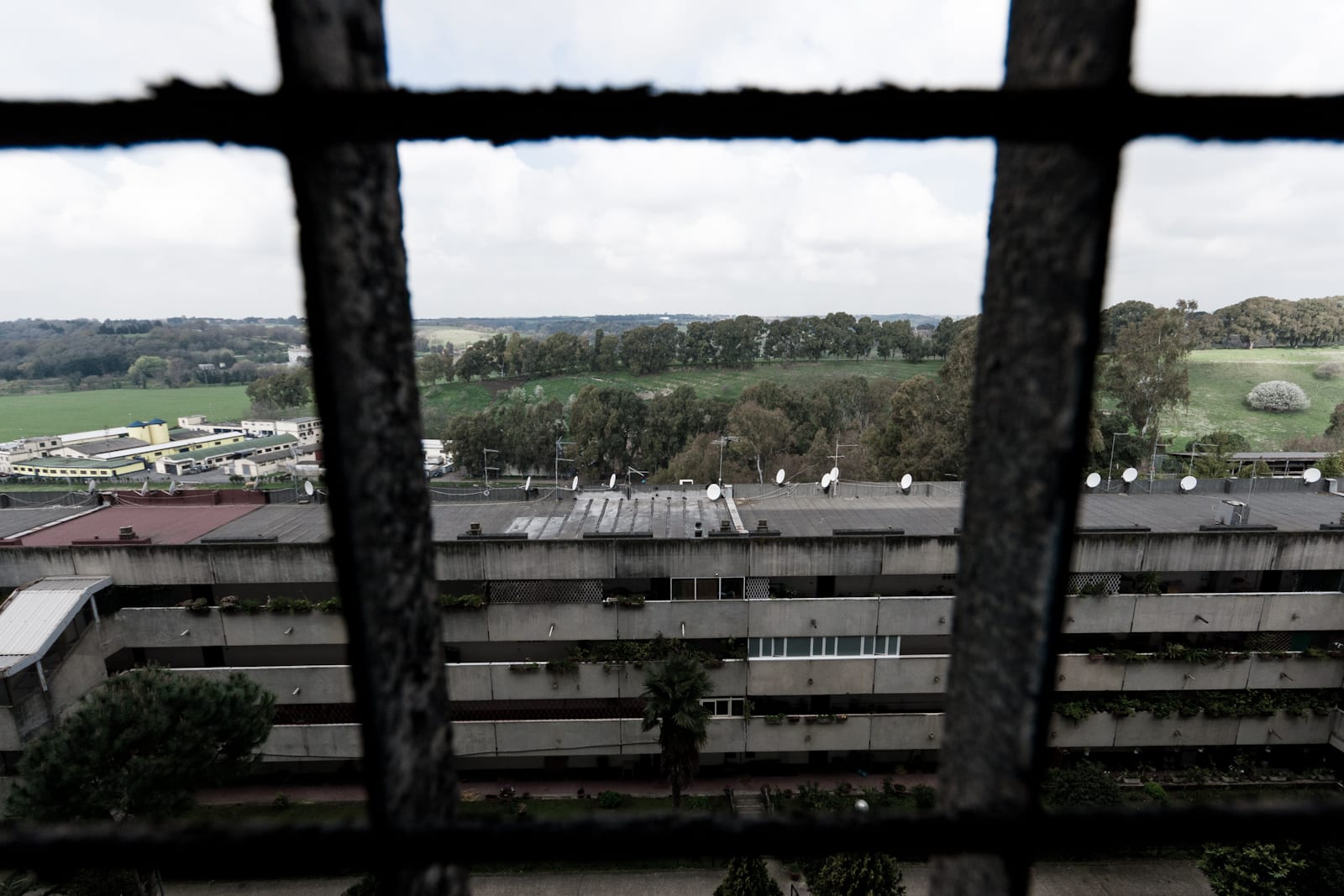
This, along with other initiatives, “helps the people to see that at least the Church is close,” Cassano says. “Now there’s the visit of the pope, and that amplifies it … it means the Church hasn’t abandoned you.”
In another effort to show proximity, Cassano organized a Via Crucis within the big snake every Friday of Lent, with one procession in each lot. Parish priest Father Moises Henrique Fragoso De Souza from Brazil, who describes the complex as “its own reality,” told Crux that the Via Crucis was a chance to show the Church’s closeness.
“People would gather, look out, peek out the door to say hi,” De Souza says. “It’s a very beautiful experience of a visible Church, not an invisible one.”
Cassano walks through the neighborhood jovially, patting the back of parishioners and passersby, his Roman collar popping out. But in his office, you see the strategist underneath. He sits behind a big, simple desk, facing a rather large photographic map of Corviale. From the sky, the big snake reveals all its ghastly splendor.
He stands up to point to the various areas of the neighborhood and where his flock comes from for Mass. The high-income families, living up north in villas with pools visible in the map, never come to the Church, Cassano says, though they’ll at times give money.
Unsurprisingly, the parish is in dire need of funds. In 2017 they collected about 15,000 euro (over $18,000) to help people in Corviale pay their bills. This year that might not be possible, since resources are already dwindling in preparation for the papal visit.
The parish has been busy trying to make the place presentable for the pope by tackling a to-do list of small fixes. Everything outside the church doors is paid for by the city of Rome, but for internal upgrades they’re alone. Since money is an issue, Cassano has relied on a group of zealous parishioners.
“We’re talking about 45 volunteers! That’s our budget,” he says.
Cassano met with Francis on November 9 during a Mass at Santa Marta for Roman parishes. There he approached the pope to brief him on the situation in Corviale, but Francis said he was already informed. When the priest invited him over to visit, the pope agreed, but Cassano wasn’t expecting the papal social call to come so soon.
“I believe we were chosen because it’s one the parishes which, from a socio-economic point of view, is in the worst situation,” he says. “If he hadn’t come here, the question would be, why not? He’s a pope who’s very attentive to the peripheries, attentive to situations of emergency and decay, so it would be strange.”
With a limited number of helpers and virtually no economic support, Cassano attempts to garner enthusiasm and make lemonade out of lemons.
“We know from what we’ve seen on social media that there’s a lot of interest, a lot of expectations. That’s not just coming from the parish, but from the population around it,” he says of the papal visit.
Not everyone agrees. Spattered in white paint, one of the parishioners and volunteers, Carlo Bagliocchi, expressed skepticism regarding the actual involvement and interest in the pope’s visit on the part of the community, especially its youth.
“Young kids, I’ve heard them saying, they don’t care at all,” he told Crux in a thick Roman accent. “Let’s hope that when the pope comes, youth will get closer… even though… who knows!” he added, his palms upwards and his head tilted in a universal sign of resignation.
Bagliocchi is one of the abandoned in the neighborhood. He works as a cleaner for 300 euros a month ($370) and makes extra cash with jobs here and there. It’s not uncommon, he says, that he’d survive for more than two weeks without a penny in his pocket.
“There’s nothing here,” he says, “Everything was abandoned.”
For years Bagliocchi hated the Church, which he said ignored him like everyone else when his beloved wife died eight years ago, plummeting him into a deep well of depression. His niece brought him back into the fold, but he likes to imagine his wife as an angel guiding him back to the parish.
For Maria Luisa Vermeil, another parishioner, the pope’s visit is “something amazing,” and she told Crux she had attended Pope St. John Paul II’s visit to the parish about 25 years ago. Francis’s call on Corviale “is a triple joy, an honor and a grace of God,” she says, adding that she and her disabled son hope to sit front row at the event.
“I’d like it if this visit of the pope led to communion among the different components of the parish,” Cassano says. “I hope it will help the parish ad extra see that they can come home here, there’s a home for them here, there’s a place they can come without paying anything and with tranquility.”
Francis has been able to inspire change and optimism in bleak situations before. Russian President Vladimir Putin credited him with preventing a massive military offensive by the West in Syria, and a papal visit to the war zone of the Central African Republic in 2015 was essential in creating the conditions for a largely peaceful transfer of power.
On occasions where things seem bleak and unchangeable, the Argentinian pope inspires courage to dream big, to work together and hope for a better future. While those papal adrenaline injections might not last forever, or even bring enduring results, it might be just what Corviale, the “big snake”, needs right now.
